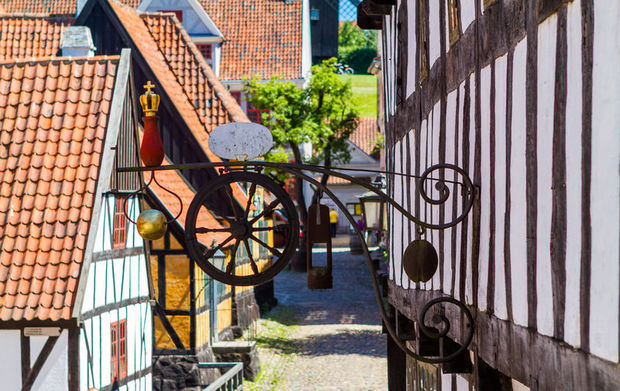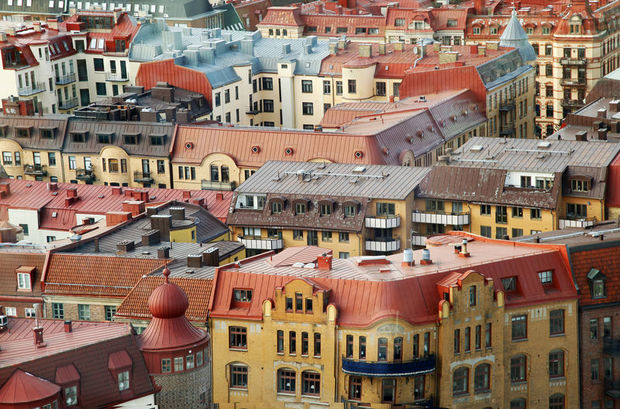Although the likes of Stockholm, Copenhagen and Oslo rightly grab the headlines, there’s something to be said for turning just off the beaten track. In fact, you can often find Scandinavia at its most authentic outside of its capitals, served up to a backdrop of unique histories, gourmet food scenes and the region’s famous cutting-edge design. This is your introduction to Scandinavia’s second cities.
Aarhus

As the European Capital of Culture for 2017, Denmark’s second city is starting to gain international attention. And rightly so, not least for its fascinating heritage. Having started life as an 8th-century Viking settlement, remembered today in its superb Viking Museum, the city’s natural harbour brought a mercantile wealth, evidenced in cobblestone streets lined with historic churches. Chief among them is the giant Domkirke, a 15th-century cathedral beautified by fairy-tale frescoes. And, for a truly immersive experience, head to Den Gamle By. It’s a reconstructed market village, complete with half-timbered houses, working craftsmen and a palpable Hans Christian Andersen charm.
But, Aarhus itself is very much focused on the present. Hip boutiques, bars and cafés are matched by a forward-thinking restaurant scene adorned with Michelin stars. Expect everything from inventive food markets by the river to traditional eateries where open sandwiches, smorrebrod, continue Danish traditions. And, along with a year-round music programme, there’s plenty of architectural innovation. This is best exemplified by the ARoS, a contemporary art museum, and the Moesgård Museum of prehistory, each resplendent in clean lines and soaring spaces. But you don’t have to dip into one of the excellent museums for a dose of culture with 2017 promising an exciting array of events.
Visit Aarhus on Best of Denmark with Small Danish Hotels
Bergen

Often unfairly overshadowed by Oslo, second-city Bergen enjoys a charm all of its own. Like Aarhus, Bergen cut its teeth as a seaport, playing an important role in the Hanseatic League. This Middle Ages trading network is best glimpsed in the city’s wooden terraces, ruined stoned fortress and historic wharf – Bryggen. Here, long rows of colourful timber buildings are an immaculately preserved example of the city’s seafaring past. Once host to warehouses and living quarters, today, a walk down their narrow alleyways will bring you among artist studios and craft workshops.
However, set amid seven hills and looking out over fissured waterways Bergen is also a perfect gateway to Norway’s spectacular natural world. Take a cruise out to explore the coastal islands of its surrounding fjords or perhaps board the Floibanen funicular up into the Bergen’s mountainous frame. Here, you’ll enjoy spectacular views over the entire city as hiking and biking trails lead you among forest-dappled contours.
Visit Bergen on Fjord Escape to Bergen & Balestrand
Gothenburg

While Stockholm is known for its big-name grandeur, Gothenburg is home to a more relaxed appeal. Trams rattle through its streets, galleries host masterpieces by Van Gogh and Rembrandt, and its centre is dotted with delightfully welcoming green spaces. Prime among these is King’s Park, a beautifully sculpted flash of verdure that’s a favourite amongst sunning locals. Its historic centre, dotted with neoclassical architecture and centred around the impressive city cathedral, is also plied by a small network of 17th-century canals. They offer some of Europe’s most interesting sightseeing opportunities, with the chance to enjoy a guided tour of the city from the seat of a kayak.
This being Sweden, there’s also plenty of forward thinking. Head to the central Haga District to uncover the city’s cool; once a hippy favourite, today its cobbled streets and timber houses host cutting-edge boutiques and trendy cafés. There’s also further innovation in its culinary scene, with Sweden’s west-coast seafood a particular highlight. Inspired? Head out of the city to discover secret beaches and wild archipelagos.
Visit Gothenburg on Gothenburg & The West of Sweden
Tampere

Although, strictly speaking, Espoo is Finland’s second city, it’s often seen as an extension of the country’s capital, Helsinki. Instead, Tampere deserves attention. As Scandinavia’s largest inland city, it’s sandwiched between two great lakes – a scenic backdrop that lends the city something of a tranquil quality, not least for the Tammerkoski River that runs right through its centre. And, its welcoming disposition has made it a favourite for many a visitor. Those all-important cobbled avenues lead between the historic red brick buildings of Tampere’s manufacturing past to a stunning array of cultural centres. A long-standing belief in arts patronage has brought about everything from sculpture parks to world-class galleries, including the Art Museum of Tampere, Hiekka Art Gallery and Sara Hildén Art Museum. There’s even the cutesy Moomin Museum, dedicated to Finland’s favourite cartoon characters.
Visit Tampere in Finnish Lakeland


